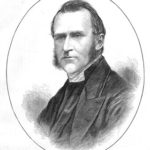Professor of biblical interpretation and theology at Ashland Theolgical Seminary, Brenda B. Colijn, has recently published Images of Salvation in the New Testament (Downer’s Grove: IVP Academic, 2010), and received some solid endorsements for her work.
The book’s main page at the publisher’s website: http://www.ivpress.com/cgi-ivpress/book.pl/code=3872.
The book’s Amazon page: http://www.amazon.com/Images-Salvation-Testament-Brenda-Colijn/dp/0830838724.
A couple of reviews:
John Byron (Associate Professor of New Testament at Ashland Theological Seminary): http://thebiblicalworld.blogspot.com/2011/03/images-of-salvation-in-new-testament.html.
-
-
- A notable quote from Byron’s review: “The chapter on
-
Justification and Faith(fullness)
-
- is particularly praise worthy. In 21 pages she skillfully distills down the issues related to the New Perspective on Paul and the debate surrounding subjective and objective reading of genitive nouns. I have decided to require this chapter for my Introduction to the New Testament and Exegesis of Romans class.”
Joel L. Watts: http://thechurchofjesuschrist.us/2011/02/review-images-of-salvation-in-the-new-testament-ivpress/
An interview with Colijn about the book: http://nijaygupta.wordpress.com/2011/02/11/interview-with-b-colijn-images-of-salvation-in-the-nt/.
A description of the book from the book’s page at the publisher’s website:
-
-
- What does salvation in the New Testament look like?
-
-
- “The New Testament does not develop a systematic doctrine of salvation,” writes Brenda Colijn. “Instead, it presents us with a variety of pictures taken from different perspectives. From one angle, the human predicament is rebellion against God. Salvation looks like living under God’s universal reign. From another angle, the human predicament is bondage to both internal and external forces. Salvation looks like freedom from those forces. From yet a third angle, the human predicament looks like alienation from God, from other people, from creation and even from one’s own best self. Salvation looks like the restoration of those relationships.”
Colijn, who holds degrees in English literature as well as theology, embraces a critical-realist methodology that incorporates New Testament theology, literary criticism and theological interpretation. She advocates listening to the individual authors of Scripture in their own social-cultural and historical settings, while looking for how the texts work both individually and collectively at a literary level.
Students of the New Testament and of theology will both find their vision broadened and their understanding deepened by this rich, informative study. As the author seeks to understand their implications for people of faith, she uncovers how New Testament images provide the building blocks of the master story of redemption.
Endorsements from the book’s section at the publisher’s website:
“A very long time ago, George Caird wrote a classic titled The Language and Imagery of the Bible. In it Caird showed the considerable importance of careful scrutiny of key images used of various theological and ethical concepts. In her new book, Images of Salvation in the New Testament, Brenda Colijn in a careful and artful way, focusing on soteriological images, has done for our current generation what Caird did for his. Highly recommended for those wanting to understand not merely the nature of salvation but also its many facets and dimensions.”
- —Ben Witherington III, Amos Professor of New Testament for Doctoral Studies, Asbury Theological Seminary
“Brenda Colijn invites us to live in the lush forest of New Testament soteriology, calling our attention to the majesty and power of each of its spreading trees rather than hewing them down as lumber for some artificial theological construction. She healthfully focuses her study on the diverse metaphors and images–like covenant relationship, citizenship in a new country, deliverance from bondage, pilgrimage and contest–that reframe the human situation and God’s restorative invasions therein. Colijn honors the distinctive perspective that each New Testament author brings to the discussion, helping us to see the kaleidoscopic beauty of the whole. She refuses to flatten images and metaphors into propositions, but rather seeks to unleash afresh their power to transform our experience.”
- —David A. deSilva, Trustees’ Distinguished Professor of New Testament and Greek, Ashland Theological Seminary
“Reading through Colijn’s survey reveals the extraordinary richness of the New Testament view of salvation and the importance of translating this concept into images and metaphors that connect with human experience.”
- —Donald Senior, Bible Today, March 2011





